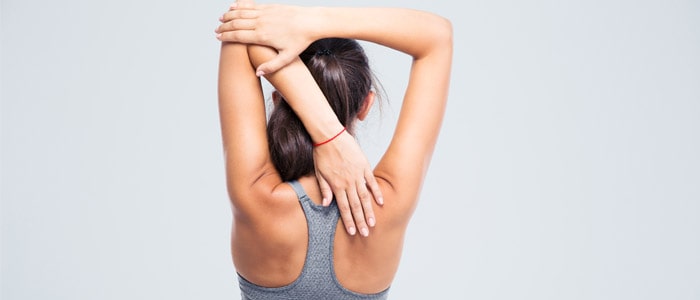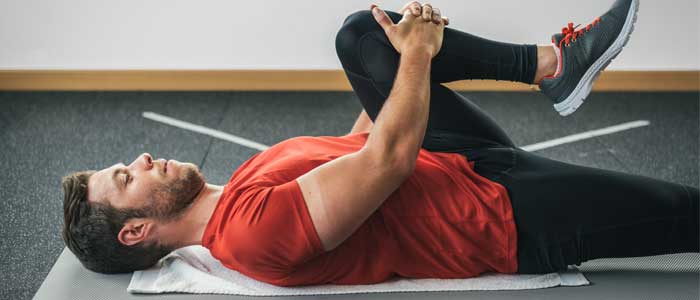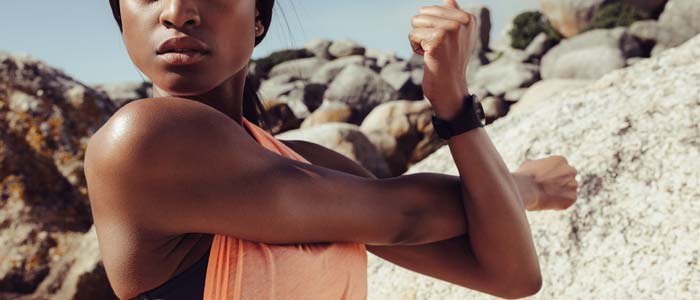10 Things To Know About Stretching Before and After Exercise
15th Oct 22

There are many benefits to stretching, especially for those who lead typically sedentary lives with lots of driving or working at a desk. It is a great way to limber and loosen the body, helping it to perform better, recover better, and feel more comfortable and pain-free during day-to-day life. It is particularly important when it comes to working out. Here are ten of the most important things to know about stretching before and after exercise.
Want to move fast? Jump to the right section below.
- Warm up first, stretch second
- Stretching reduces injury
- Stretching increases range of motion
- Dynamic stretches pre-workout
- Static stretches post-workout
- Stretching reduces soreness
- Stretching improves posture
- Stretching is the most important part
- Stretching reduces stress
1. Warm up first, stretch second
You might assume that stretching is the first step before any type of exercise, but it’s much more effective to warm up the body first. Some of the best ways to do this is with a fast walk, a light jog, or a few minutes on an exercise bike. This will help to circulate more blood around the body, warming up muscles ready for a good stretch.

2. Stretching before a workout reduces the risk of injury
Stretching is proven to reduce your risk of injury during exercise. That’s because warm and flexible muscles are more pliable and resilient, coping well with sudden moves. Stretching regularly also builds strength, which helps to prevent injury during exercise as well as during daily life.

4. Stretching increases your range of motion
A good stretch reduces muscle stiffness and increases your range of motion. This, in turn, can help keep joints strong and flexible for longer. Flexible joints use less energy, which means your movements will be more energy efficient, and you can really work to improve your form and performance.

5. Dynamic stretches are best pre-workout
Before your workout, we recommended dynamic stretches. These active movements help to increase muscle temperature and reduce stiffness, which leads to better speed, agility and power during a workout session. Some of the best dynamic stretches include: squats, high knees, lunges, walkouts, arm circles, star jumps and standing toe taps. Try twenty seconds of each before your next workout!

6. Static stretches are best after a workout
After your workout, we recommend static stretches. These help to slow and cool down the body gradually, encouraging muscles into a relaxed state, which maintains flexibility post-workout, as well as helping to reduce DOMS (delayed onset muscle soreness). Some static stretches include: toe touch, shoulder stretch, quad stretch, calf stretch, cat/cow and cobra.

7. Stretching after a workout reduces soreness
As mentioned, a good stretch after a workout will reduce post-exercise soreness. Without stretching, muscles are more likely to tighten up, which is what causes the aches and pains. Stretching post-workout helps to move lactic acid out of muscles and returns blood flow to a regulated pace, which makes for a better recovery and a better performance during your next session.

8. Stretching improves your posture
Stretching is one of the best ways to improve posture. It is especially good for the shoulders, chest and back, keeping them in a good alignment. Every time you perform a stretch, you are strengthening and lengthening your muscles, which naturally improves your posture. You’ll definitely notice yourself sitting up straighter.

9. Stretching is just as, if not more, important than the workout itself
It’s far too easy to finish a workout and then crash out immediately. But we can’t forget the importance of stretching after exercise. It is one of the single best ways to avoid injury and post-workout pain, as well as increasing performance for the long term. Even just five minutes of stretching can make a real difference. If you have time to exercise, you have time to stretch!

10. Stretching can even reduce stress
As with all types of exercise, stretching has been found to reduce stress levels. If you’re ever feeling tense or anxious, a good stretch may help to manage this. Flexible muscles also hold less tension, which can help to make you feel calmer.

Remember, before and after every single workout; it’s vital that you complete stretches to prepare and recover your body effectively. Take a look at our list of the best daily stretches, or if you’re looking to stretch a specific area of the body, these articles will be very helpful:
How to stretch your upper legs

Before beginning any exercise or nutrition program, consult your physician, doctor or other professional. This is especially important for individuals over the age of 35 or persons with pre-existing health problems. Exercise.co.uk assumes no responsibility for personal injury or property damage sustained using our advice.
If you experience dizziness, nausea, chest pain, or any other abnormal symptoms, stop the workout at once and consult a physician or doctor immediately.









